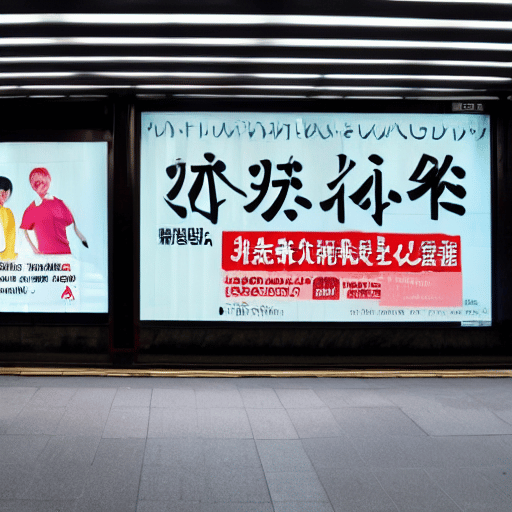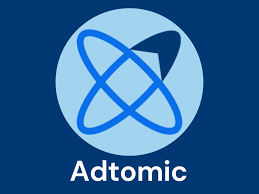Trying to handle all the match kinds, bidding schemes, and targeting when you have an Ad group with hundreds of different keywords may be a daunting endeavour. The SKAG strategy, which stands for Single Keyword Per Ad Group, is a method for dealing with this problem. To effectively manage your Amazon Advertising accounts, you need a good campaign structure. It is what enables effective optimization.
What is a Single Keyword Ad Group (SKAG)?
A Single Term Ad Group is a method of account organisation that establishes a targeted connection between a single keyword, your ad, and the associated landing page. The goal is to steer clear of any intricate or perplexing ad groups.
How to maximise the effectiveness of the SKAG strategy is a hotly contested topic. While some marketers contend that all match types for a single term should be combined in a single Ad group, others contend that each match type merits its Ad group.
Why Opt for the Single Keyword Campaign Approach?
If you’ve visited our site before, you are aware of the valiant battles we wage against the keyword dump approach.
Hundreds of keywords are thrown into a single ad group in keyword dumping tactics, and the ad group is then hoped to be successful. The simplest way to condemn your PPC account to an endless struggle is to do this.
The keyword dump is such a bad strategy since different-performing terms are treated equally. With the single keyword ad group strategy, we can resolve this.
With this technique, you can optimise the performance of only one keyword by fine-tuning the ad group bid modifiers. What if we went one step further, though?
What if we centred the optimization of a whole campaign around a single keyword?
If certain campaign-level settings were the only ones that could be changed, and keyword effectiveness varied according to these settings, this tactic might be worthwhile. Fortunately, placement bid modifiers perfectly match that build specification.
We would be able to customise placement bid settings for each term using a single keyword campaign strategy.
This additional degree of keyword management would enable us to improve our best keywords even further because Sponsored Product advertising behaves quite differently on top-of-search, rest-of-search, and product pages.
For complete control over your keywords, including their profitability and placement, the Single Keyword Campaign Strategy is the best strategy to use.
How To Create Ad Groups For Single Keywords
After briefly discussing what SKAGs are, let’s look more specifically at how to put them up.
Let’s take women’s skinny jeans as an example.
The following keywords are part of the original ad group:
- Skinny jeans
- Skinny Jeans for Women
Triggered search terms:
- slim jeans Levi’s.
- sale on skinny jeans
- skinny jeans size 6 gap
- cropped slim white jeans
- slim jeans for women
If we just have one match type and one keyword, it is rather restrictive.
You may still maintain a 1:1 ratio while minimising the amount of relevant traffic by employing various match types.
For each term in each of the ad groups, I’ll list below, that we use three.
Types of Keyword Match
Each SKAG is designed around a root term, to begin with. This is the main keyword that you want to focus on.
Therefore, “Skinny Jeans” would be the root term for the example we have been using.
However, you’ll notice a significant keyword: search term ratio if you merely create an ad group around this keyword and rely on the default Broad Match (or Iceberg Effect).
That’s because broad match has the biggest Iceberg Effect out of all the keyword match types.
This implies that while the greatest audience may see your adverts, it does not necessarily indicate that they will be the most pertinent.
All match types, except for broad match, must be used to minimise the Iceberg Effect to construct a successful SKAG.
In light of this, a SKAG that uses the same term as the original ad group would resemble this:
- +keyword+1 (broad match modifier)
- Key phrase 1 (phrase match)
- Key phrase 1 (exact match)
These keyword match types will enable you to modify your ad group such that it monopolises a specific search phrase (your root keyword).
Using Match Types
No matter the order, your broad match modifier will cause your advertisements to appear for any pertinent long tail variations of your keyword.
On the other hand, your phrase match can include additional keywords (as long as they don’t affect the order of the main keyword) but must include the keyword(s) in the order you’ve specified.
Furthermore, exact match keywords are exactly what they sound like; no other keywords may be added; it is what it is.
We maintain flexibility in our single keyword ad group by using a variety of match types.
The Benefits of Campaigns with a Single Keyword
1. Improve Your Best Keywords
Single Keyword Campaigns’ strength comes from the ability to now position your top-converting keywords in the best converting areas. An illustration will help you to grasp this the best.
Set the stage first. Two of your keywords match a particular search query. On top-of-search pages, Keyword A has a conversion rate of 15%, while on product pages, it is 10%. A product page conversion for Keyword B is 1%, and its top-of-search conversion is 35%.
Without single keyword campaigns, there is an equal chance that both keywords will appear in either ad location. However, we have control over which term appears in which placement with single keyword campaigns.
We may change the campaign settings for Keyword B in our example to have it appear more frequently in the top-of-search placement. Similar to that, we may configure Keyword A to show up more on product pages and less on top of search results.
Thus, you can significantly raise the value of your keywords by employing the single keyword campaign strategy.
2. Different search terms have different purposes.
There is substantially more competition for some search phrases than for others. For instance, there are currently potentially hundreds of thousands of searches per week for the term “Christmas.”
Due to the high competition for this term, it can be challenging to rank at the top of searches if you are selling Christmas-related goods like presents, decorations, or party supplies.
Say you have a strong conversion rate for “Christmas Special Gifts,” but not for “Christmas cloth” or “Christmas straw.” If you only employ the keyword “Christmas Special Gifts”, you can nearly always dominate the top of the search results using single keyword campaigns.
You can pay more on “Christmas Special Gifts” for top-of-search without raising your bids on your lower-converting keywords by a factor of 2, 5, or even 10.
This enables you to advertise your greatest keyword aggressively without spending a fortune on your less effective keywords as well.
Your ACOS will increase, but depending on your objectives, that might just be worthwhile.
3. Identify and improve the performance of similar but inconsistently performing keywords for the same product.
In the SKAGs framework, every single data point in an Amazon Ads campaign may be isolated. Additionally, each point may be tuned separately. Even though there is a significant association between similar keywords, like “Nike” and “shoes,” the keywords typically behave extremely differently and produce diverse outcomes.
Instead of being constrained to having those keywords applied to a single ad group, you can divide those keywords out into their ad groups with a SKAGs structure and fully capitalise on how each performs.
4. Boost Relevance of Ads
Ad relevancy for Amazon and your users is increased by using SKAGs to customise adverts for the relevant term. As a result, each keyword receives better quality scores and a higher click-through rate (CTR). The greatest factor affecting quality score is CTR.
Each ad group in a conventional campaign structure has numerous keywords. For some keywords, changing the accompanying advertising can improve performance and raise CTR. However, the CTR may decrease for the other terms. In the end, judgments are focused on averages rather than individual performance, which is never a good idea in online marketing or any marketing, for that matter.
5. Obtain Detailed Reporting
When using a single keyword ad group structure, preparing reports may initially appear challenging. because instead of 20 ad groups, you now have 20,000.
However, filing a report for SKAGs is simple. To build reports for related keywords, all you need to do is utilise labels at the ad group level. For instance, you may name all ad groups with a Nike label and Nike keywords. Applying labels makes it simple and quick to produce different types of reports.
The Drawbacks of Single Keyword Ad Groups
1. Running Many Campaigns
If you’ve never heard of this tactic before, you might be thinking,
“Will I need, say, 200 campaigns for every one of my products? That appears to be just too much to handle.
How I felt upon learning about single keyword campaigns
And you would largely be correct. This strategy’s main drawback is that it necessitates meticulous account maintenance, which can be challenging for small businesses to handle.
One method to lessen this drawback is to limit the use of this tactic to your finest exact match keywords and keep the remaining keywords in a single campaign.
Starting small with your top 10 consistently converting keywords is what we advise. With them, try out this tactic to see whether it yields any notable outcomes. If not, you can restore the previous structure of your account.
Convert a few more of your keywords into standalone campaigns if it works. It all comes down to being deliberate in your actions and gaining confidence through a plan before committing totally.
Don’t feel obligated to start 100 new single-keyword advertisements this week. Begin modestly.
2. Data that is too segmented
This strategy’s segmentation of your data is another drawback. Those numerous campaigns may have given you total keyword control, but they significantly divided your data.
When you’re dealing with 2 clicks and 50 impressions per campaign rather than hundreds of clicks and thousands of impressions, it becomes more difficult to make informed decisions.
Similar to how finding specific metrics across many keywords requires combining separate account data, calculating averages will need more work.
This flaw, though, is by no means a deal-breaker. This issue won’t be a major barrier in comparison to the potential benefits of using a single keyword campaign strategy if you have a good PPC account manager or software application like AiHello Autopilot.
3. Tests go on longer.
Since you don’t receive a concentrated amount of clicks from several keywords in the same ad group, ad testing may take longer.
You can convert your high-traffic volume keywords into SKAGs and maintain lower traffic volume keywords in larger ad groups if you discover that you can consistently improve the advertisements you test (which is uncommon).
6 suggestions for improving a single keyword ad group
Even though a SKAG strategy can be challenging and time-consuming, by employing certain clever optimization techniques, you can make sure that the time is not wasted. To keep your SKAG on the correct track for excellent profits, abide by the following best practices:
1. Reliability
If all you do in PPC marketing is sometimes check in, you won’t get very far. You’ll rapidly become disoriented and will only become more so as new information comes in. You’ll develop a good habit and become familiar with the main metrics, performance-affecting variables, and data patterns if you approach campaign analysis consistently.
2. Regular Testing
Regular testing is a critical component of SKAG’s success even though it requires more time. To find user search terms that are a better match for your ad copy, experiment with various Ad groupings. Over time, this will help you enhance engagement stats and adjust your ad copy language.
3. Prevent Repetition
Duplicate keywords can be a significant problem when employing a SKAG technique in paid advertising, as was already discussed. You will not benefit from a user’s search query that activates a keyword in several of your Ad groups. When you locate duplicates, get rid of them to improve your campaign.
Never skimp on significance! Your keywords need to be pertinent to both your users and your products or services. To find lead-generating phrases for your SKAGs, examine any historical data you may have on keyword performance.
4. Be aware that relevance is essential
You might own strong copywriting abilities and wonderful keywords with high monthly traffic. You might also have a captivating landing page with expertly taken pictures and polished design. All of that, though, will be for nought if your keywords are unrelated to what you’re giving.
5. Match Types Are Important
A random approach to type matching could cost you money, impressions, or both. Consider how match types can best be used to accomplish your campaign’s objectives, whether they be brand recognition or conversions.
By segmenting your long-tail keywords and developing different SKAGs in your PPC campaign, you can avoid potential conflicts rather than choosing wide-match types.
6. Don’t be hesitant to make significant changes
In an Ad group when you’re only using one term, you have greater leeway to experiment with the other factors at play.
By significantly altering your ad copy, you can experiment with dramatically varied voices, headlines, and CTAs. The advertising in each group can vary greatly from one another, and you can use sophisticated testing strategies to identify the most successful variations.
Conclusion
PPC advertising offers countless possibilities for building powerful campaigns. A lot of seasoned advertisers disagree on the efficacy or wisdom of the single keyword ad group notion when it comes to maximising your time and financial investment.
Although it has several advantages, a SKAG method should generally not be your only tactic. Utilizing SKAGs in addition to other PPC tactics and including certain Multiple Keyword, Ad Groups in your account may be a wiser use of your budget.
The SKAG notion is ultimately a double-edged sword that can either help you succeed in your advertising efforts or it can cause you excruciating misery. Everything hinges on how you use it.


